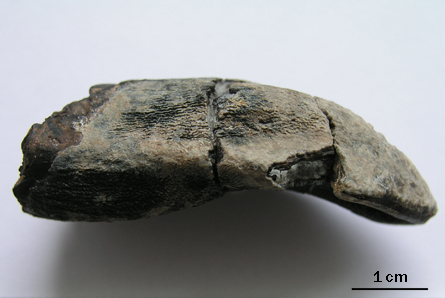Big dinosaurs kept their cool
Body temperature of long-gone beasts resembled that of mammals
- More than 2 years ago
How do you take a dinosaur’s temperature? Very carefully.

By counting chemical bonds in 150-million-year-old fossilized teeth, scientists have done the paleontological equivalent of jamming a thermometer up a giant reptile’s rear end. Reporting online June 23 in Science, the researchers say the huge, four-legged dinosaurs known as sauropods would have registered a body temperature similar to that of any modern Homo sapiens.
Barring a nurse’s visit to Jurassic Park, the work provides perhaps the best glimpse yet at dinosaurs’ internal temperature, a key factor in understanding their metabolism. The findings measure some 4 to 7 degrees Celsius cooler than one theory of dinosaur growth has suggested.
“This approach to the old issue of warm- versus cold-bloodedness has the potential to open a new door into this controversy,” says Luis Chiappe, a paleontologist at the Natural History Museum of Los Angeles County who was not involved in the research.
Once thought to be cold-blooded and sluggish like crocodiles and alligators, dinosaurs got a reputation makeover in the 1960s and 1970s as active, possibly warm-blooded creatures. But scientists still don’t agree on exactly how dinosaurs exchanged heat with their surroundings and how warm or cold they might have been inside.
To tackle this question, a research team led by postdoc Rob Eagle of Caltech decided to look at sauropods, the biggest land animals that ever lived. Eagle’s adviser, John Eiler, had invented a way to tease out body temperature by studying the number of chemical bonds formed between rare versions of carbon and oxygen in growing teeth and bone. More of those bonds form at lower temperatures, so fossilized teeth can reveal how warm it was inside the living animal.
Eagle’s team analyzed roughly a dozen teeth of several sauropod species excavated in Tanzania, Oklahoma and Wyoming. The creatures’ internal temperatures clocked in between 36 and 38° Celsius. That’s warmer than cold-blooded creatures like crocodiles, cooler than birds, and just about the range of modern mammals.
Other scientists have suggested that sauropod body temperature could have reached 40° or even higher, simply because of the sheer amount of the dinosaurs’ flesh. The new study suggests instead that dinosaurs had some way of keeping cool — perhaps by using internal air sacs or long necks and tails for ventilation, Eagle says.
The work fits with other recent evidence suggesting that sauropods and modern mammals were about the same temperature, says Chiappe. But the sheer size of sauropods probably means the resemblance stops there. “They aren’t necessarily physiologically similar to modern mammals in having high metabolic rates,” Eagle says.
His team now plans to calculate body temperatures in fossils of other dinosaurs, such as smaller sauropods. Analyzing more dinosaurs — along with birds, mammals and their ancestors — could reveal important evolutionary patterns, Eagle says: “You could trace when warm-bloodedness actually evolved.”







